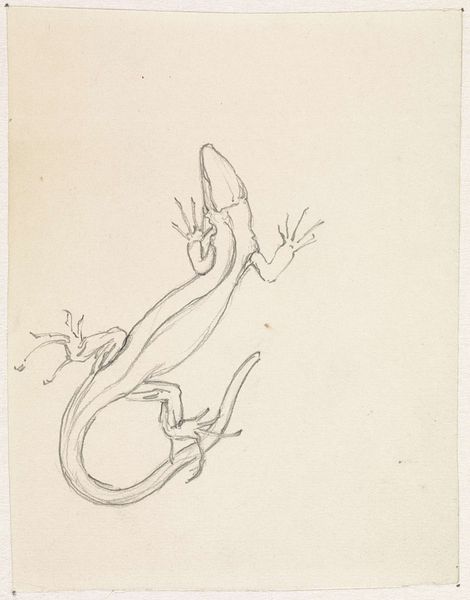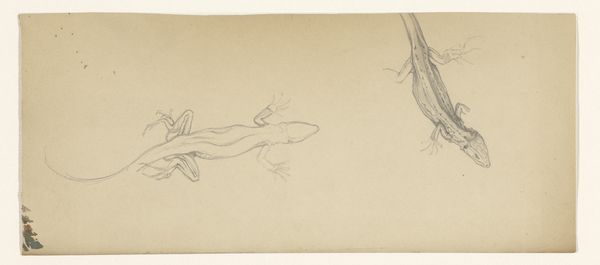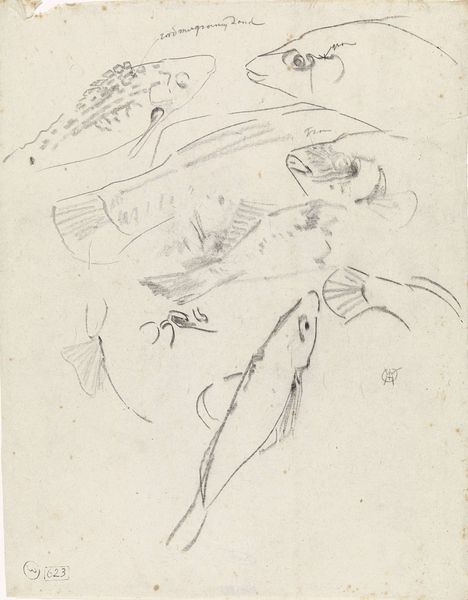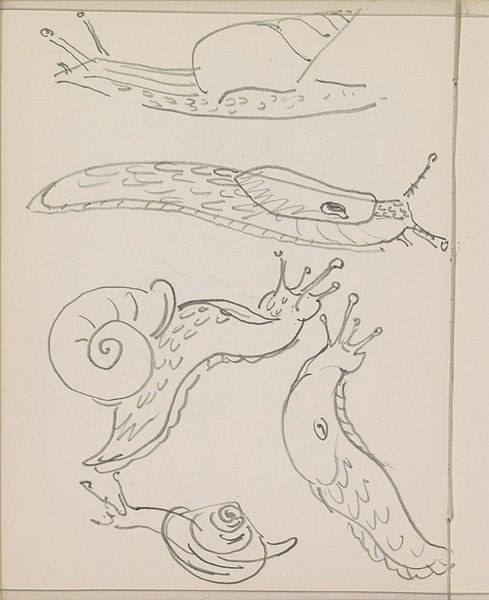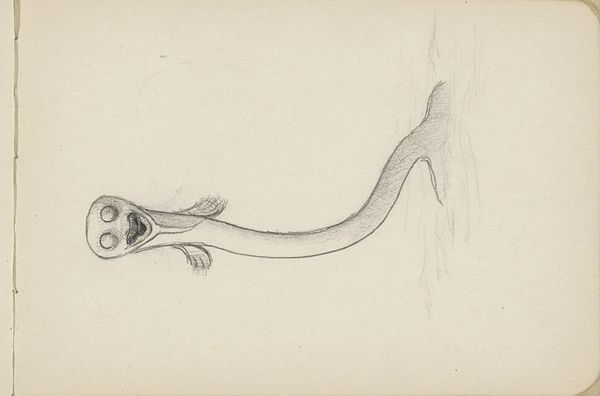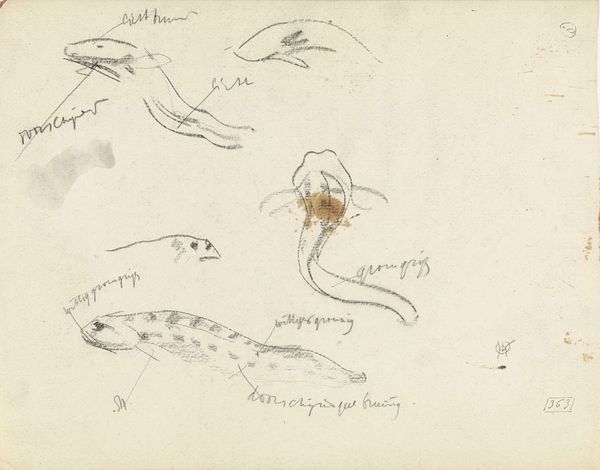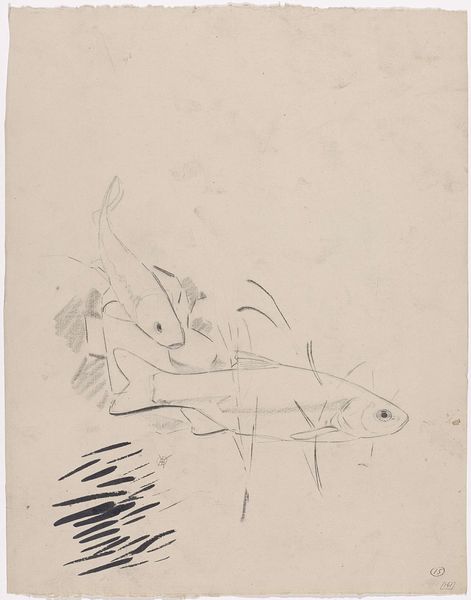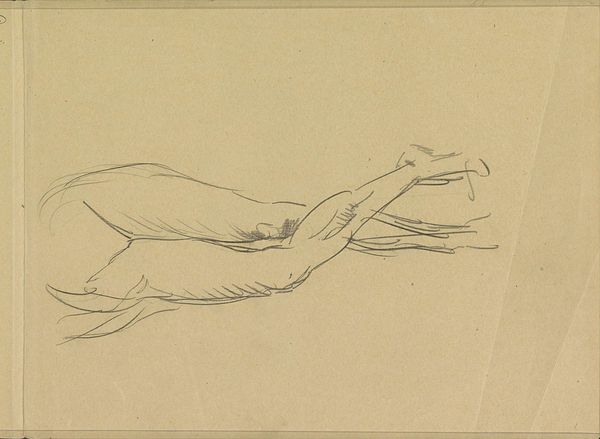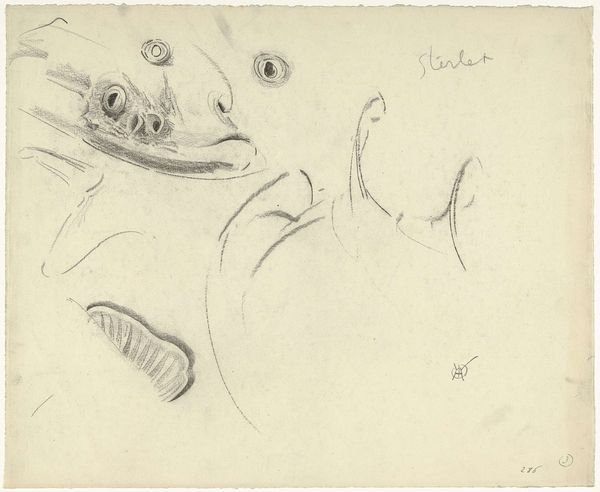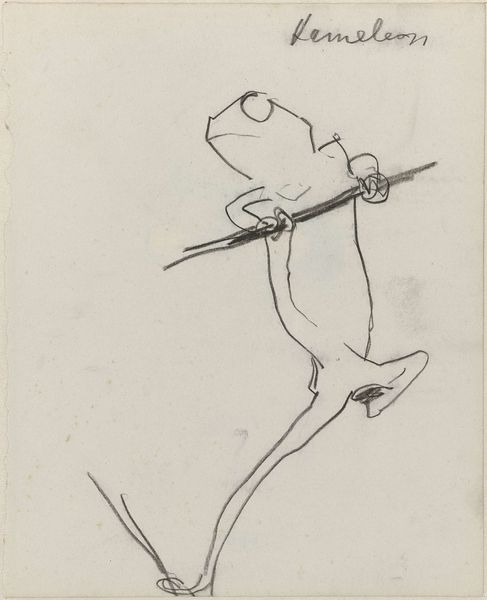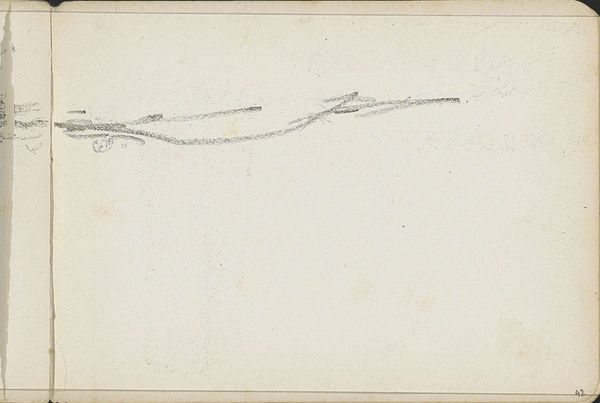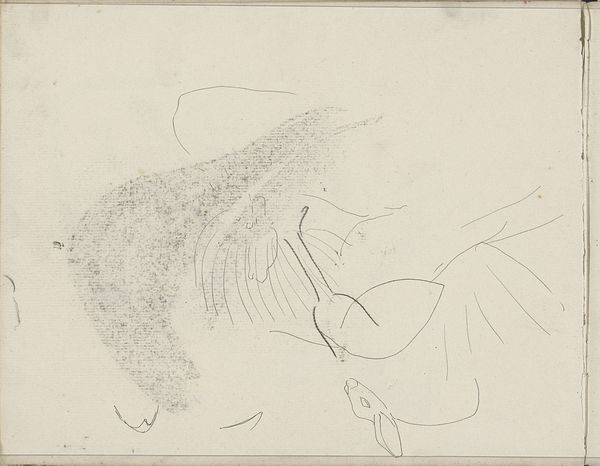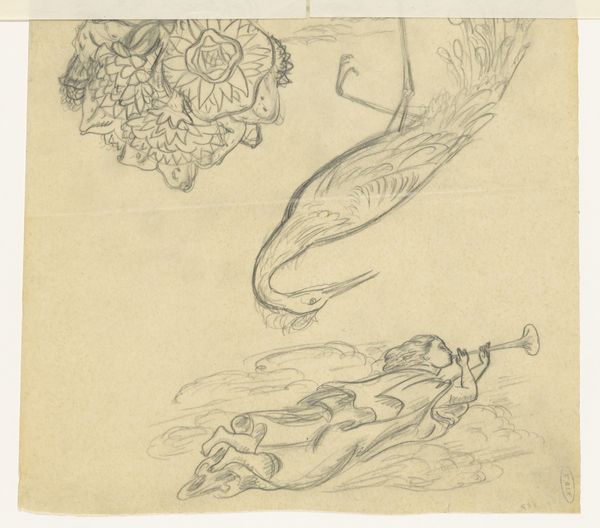
drawing, pencil
#
drawing
#
animal
#
form
#
pencil
#
realism
Dimensions: height 183 mm, width 148 mm
Copyright: Rijks Museum: Open Domain
Curator: This is a drawing by Julie de Graag, titled "Sketches of Lizards," created sometime between 1887 and 1924. It’s rendered in pencil. You can find it in the Rijksmuseum’s collection. Editor: It feels like a glimpse into a naturalist's notebook. The lines are so delicate and the lizards are presented so simply, almost diagrammatic, floating against the empty space of the paper. Curator: De Graag was, after all, deeply invested in depicting nature. But she also operated in a period where capturing nature could speak to the cultural preoccupations of the period, where there was this scientific pursuit of categorizing and understanding the natural world, aligning itself with new forms of colonial resource management. Editor: The subtle shading definitely adds a sense of volume and form, doesn't it? See how she captures the texture of the skin, and how each lizard is angled differently on the page? It breaks down the sense of exact reproduction and highlights different contours of each creature. It feels like de Graag sought the essential form of the lizard and re-expressed it again and again. Curator: She was working during a very interesting period in Dutch art. Though rooted in realism, we also see hints of movements pushing against strict representation. You know, I think these “sketches” also offer a quiet, even radical challenge. In rendering seemingly unremarkable fauna with such attention, de Graag grants validity to the underseen corners of life, a contrast from classic themes celebrating national might through powerful people or striking events. Editor: The empty space around the forms also lends itself to a unique reading. With the negative space and isolated renderings of the lizards on the sheet, it transforms the very essence of the specimens themselves; It lends them an ethereal weight, and offers new modes to consider balance and asymmetry in her craft. Curator: I think it speaks to an interesting dynamic; how women artists historically navigated a cultural context in which some doors remained shut. Natural history provided an alternative path, as we know. Editor: True, her gaze, trained perhaps within constraints, provides this wonderfully close inspection and regard for the details. The way that De Graag has rendered each figure here is remarkable. I see something more nuanced here, a challenge, an inquiry. Curator: I completely agree. And in doing so, she subtly rewrites art history through an exploration of form. Editor: Ultimately, it allows us to ponder about where power resides and is directed, then and now.
Comments
No comments
Be the first to comment and join the conversation on the ultimate creative platform.
